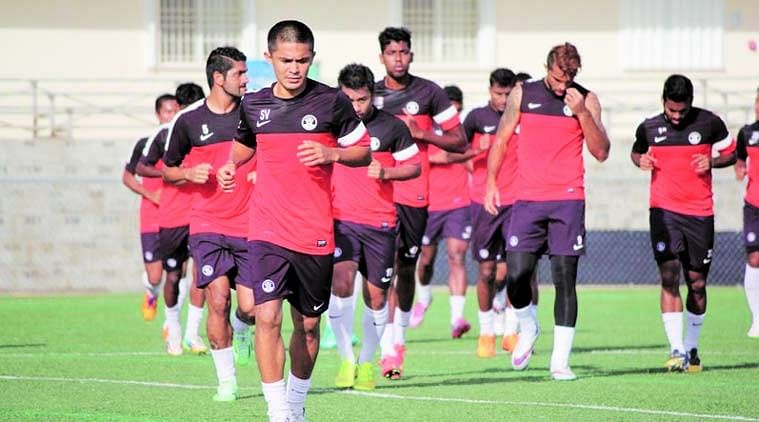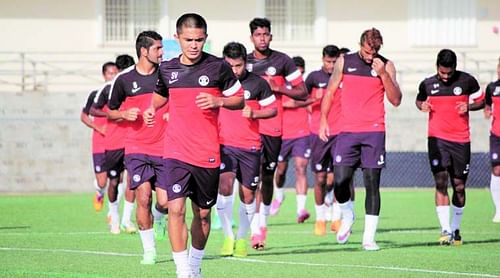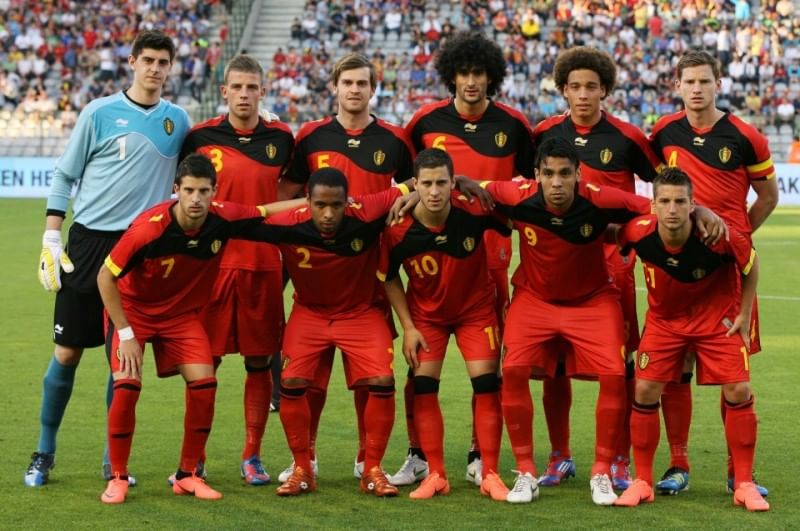
What Indian football can learn from Belgium

Indian Football stands at the crossroads of history right now. On one hand, we have a domestic league that is supported by the AFC while the other side of the coin, the Indian Super League(ISL), with all its glamour, has put Indian football on the on the World map in just one season.
Following the inaugural season of the ISL, the Indian National team has played four qualifying matches for the 2018 World Cup. These being the first matches played after the ISL there was a lot of optimism all around. Fans expected the results to be spectacular and the team did not disappoint (at least initially). First came a 2-0 win against Nepal at home and a draw in the reverse fixture meant India had made it to the group stages of the Qualifiers.
Placed in a group alongside Iran and Oman it was going to be a tough ask for the National side to qualify but 20,000 fans turned up for the first game against Oman. Even though India went down 2-1, the team had a goal wrongly disallowed for offside and Chhetri’s wonder goal meant the fans could return home with their heads held high. What followed, however, brought the entire nation crashing back to reality.
India’s loss to Guam was surprising, but the performance raised a lot of questions as well. Losing to a ‘lesser team’ is not unheard of but the manner of the loss was appalling with the team looking surprised when Guam had a go at them.
What followed was a huge Persons of Indian Origin (PIO)debate on whether we should let players of Indian origin play for the National side. Players like Micheal Chopra made his voice heard, National team manager Stephen Constantine openly advocated the idea of POI’s but the most sensible opinion was voiced by none other than Sunil Chhetri who said that we have a population of more than a billion and that we should have a team with 11 homegrown players.
While what Chhetri said sounds very Nationalistic, the way football is organised in India it will take a while before the dream of an Indian team playing in a FIFA World Cup comes true.
The Belgian way

The way I see it the system needs to change. Belgium were a team famed for their organisational skills and resolute defending throughout the 1980’s. They were a team who would arrive at a World Cup if you were drawn against them you knew you were in for a tough game. In 1998, they were eliminated from the World Cup in the group stages after failing to win a single game and scoring just 3 goals.
In the next edition, they were knocked out in the Round of 16 by eventual Champions Brazil but again in the four games they played they scored just 6 goals with 5 coming in two matches.
After their exit from the World Cups, Belgian FA technical director Michel Sablon and youth coach Bob Browaeys came up with a plan to change Belgium’s football forever. The duo came up with a plan wherein they changed the football at the grassroots by changing the philosophy at the youth level from winning to development. Everyone was asked to play an attacking 4-3-3 and not worry about the results.
The team that was placed 16th in 2004 crashed to a low of 71 in 2007 after failing to qualify for Germany 2006. By the time the 2010 World Cup graced our screens, Belgium were absent yet again being 48th in the rankings. But there were signs of something big around the corner even if it wasn’t evident at that point of time.
Vincent Kompany was making a name for himself at Manchester City while Defour and Witsel were controlling games for Standard Liege at the highest level. Vertongem was considered as one of the best ball-playing defenders in Holland and a young Eden Hazard was terrorising defenses in France while playing for Lille.
When it came to the 2014 World Cup, Belgium were considered as the fifth favorites based on the betting odds before the tournament. Although they were knocked out by a brilliant Higuain goal in the quarters their performances won them praise from everyone. As per the latest FIFA rankings, they are currently 2nd in the world.
Long ball football, not the way forward
India have been playing long ball football for quite some time now. Now this is not a bad thing necessarily, but we don't have the players to hold up the ball well. Bob Houghton played the long balls during his reign and so did Savio Medeira. Wim Koevermans tried a different system but reverted to the former soon after results started going in the wrong direction.
India need to find a system that suits our style of play. If African giants such as Ivory Coast, Cameroon or Ghana try playing the European style of football it is highly unlikely that the teams will be able to win anything big on the biggest stage. Africans are known for their strength and pace and utilizing these qualities would be more effective than trying to win a World Cup playing tiki-taka football.
The average height for Indians is 5’5’’ as such the style of play does not suit our system of play. India can play the football they are currently playing and try to get a result against the ‘big boys from Asia’ or they can change the style of play and even if they lose they can go out with their heads held high. Players like Jakichand and Seityasen have shown that Indian teams are exciting to watch when the ball is kept in the ground instead of hoofing it up to the big man on every occasion.
We have been stuck in mediocrity for far too long and the current system does not work(that is evident through the results of the last few years). There will be a lot of difficulties in setting up something of this magnitude in a country as huge as India where the state of Kerala is larger than Belgium in terms of size. The ISL grassroots could be a great channel through which we can establish a new system.
The new coaches that will be hired should be based on the basis of if they can play their football according to the system. If we can get a unified league in the next few years, India will have representation in almost every part of the country. It is a long shot but if India can actually pull it off it could reap benefits for generations to come.